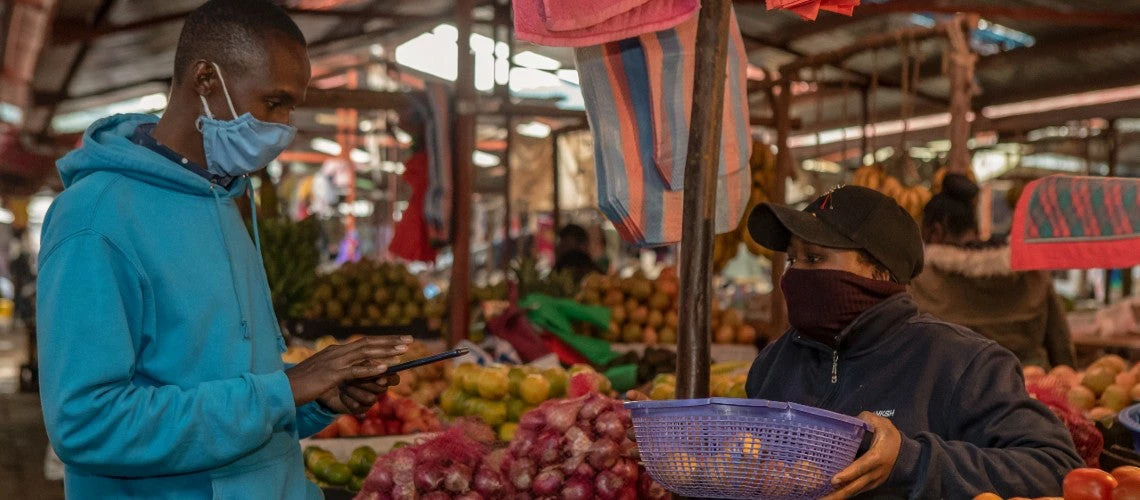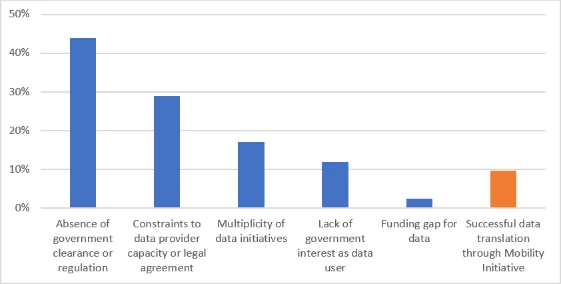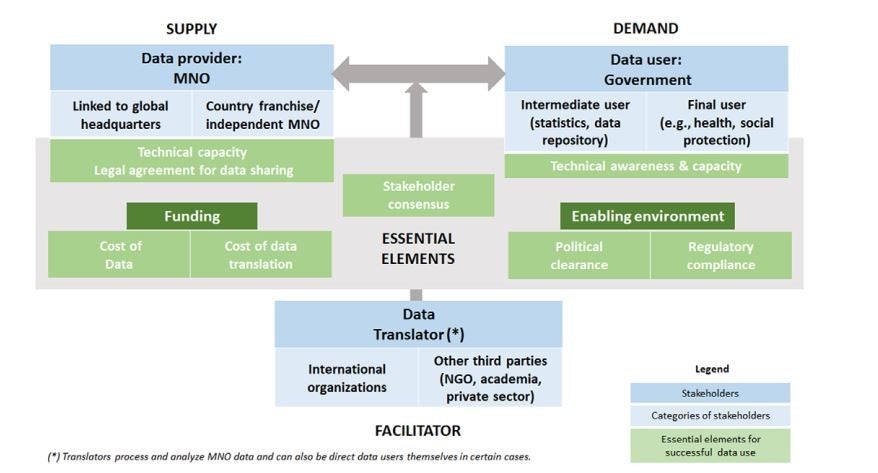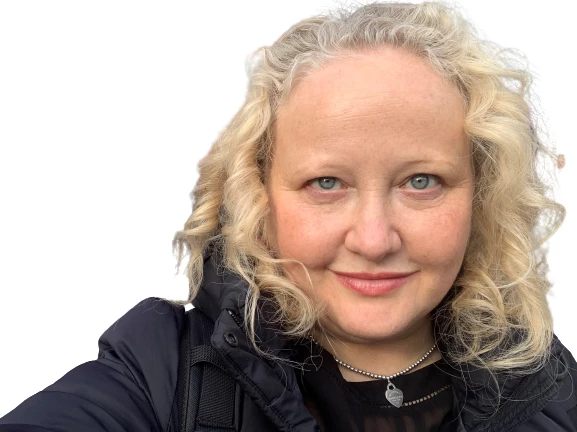 A Kenyan man uses his photo to make a payment at a fruit stall in a Nairobi market
A Kenyan man uses his photo to make a payment at a fruit stall in a Nairobi market
The global use of mobile phones generates a vast amount of data. What good can be done with these data? During the COVID-19 pandemic, we saw that aggregated data from mobile phones can tell us where groups of humans are going, how many of them are there, and how they are behaving as a cluster. When used effectively and responsibly, mobile phone data can be immensely helpful for development work and emergency response — particularly in resource-constrained countries. For example, an African country that had, in recent years, experienced a cholera outbreak was ahead of the game. Since the legal and practical agreements were already in place to safely share aggregated mobile data, accessing newer information to support epidemiological modeling for COVID-19 was a straightforward exercise. The resulting datasets were used to produce insightful analyses that could better inform health, lockdown, and preventive policy measures in the country.
To better understand such challenges and opportunities, we led an effort to access and use anonymized, aggregated mobile phone data across 41 countries. During this process, we identified several recurring roadblocks and replicable successes, which we summarized in a paper along with our lessons learned.
Main roadblocks to successful data translation and percent of successful cases

Based on the experience across the country cases, we saw six main challenges:
1. It is difficult to scale access to mobility data across countries because of variations in the countries’ mobility data ecosystems. Countries’ ecosystems are composed of different regulatory environments, partnership structures, incentives, stakeholders’ internal organizational structures, and varying capacities of Mobile Network Operators (MNOs) and governments. This means that it is impossible to apply the same strategy for accessing and using mobility data across many countries simultaneously in emergency situations.
Stakeholders and key elements for the successful use of telecom data
2. Stakeholders do not sufficiently understand the value and cost of mobility data. The lack of consensus on what a unit of mobility data is or how much it should cost prevents it from being readily available commercially. We need a reasonable standard for the pricing of mobility data for use by non-profits. MNOs often provide free or subsidized access to mobility data during sudden-onset humanitarian emergencies while absorbing the costs. However, making these data available involves collecting, extracting, processing, hosting, and protecting data – costs that MNOs are largely not prepared to cover for non-emergency development work. Conditions must be established for providing data at no cost for emergencies, at a reasonable cost for non-emergency development or humanitarian initiatives, and at profit costs for commercial uses. More clarity around these issues would help to raise the necessary funds for this work.
3. Building trust between stakeholders and decision-makers is necessary but takes time. Establishing new data-sharing agreements and a system to generate valuable analytical insights requires trust. Developing this trust between stakeholders during a sudden-onset emergency can be challenging. Commercial, humanitarian, and public sector interests may overlap and conflict with individuals’ rights. The regulatory environment may lack clarity, contributing to a lack of confidence in the partnership. Trust needs to be built over time, well before an emergency occurs.
4. Standardized approaches to data practices and agreements across MNOs and countries are still needed. Standard data sharing or licensing agreements do not yet exist, and preparing them carries a cost that some providers do not want to incur, especially if they are providing the data pro bono. A consensus on pre-determined indicators or definitions for the data also does not yet exist. This prevents, for instance, dashboards produced by MNOs covering different geographies in the same country from being merged to provide a more comprehensive overview for that country.
5. Capacity gaps exist across all stakeholder groups, ranging from technical capabilities and knowledge to available human resources. In some settings, MNOs may not have the technical and analytical capability in-house to produce indicators from their telecom data or may not have enough people to work on this task during an emergency. Development organizations and government agencies seeking access to data and insights may not have the capacity or expertise to work with or apply them to actionable decision-making. Countries need the training to coordinate or lead the overall efforts.
6. Gaps in the data protection and cybersecurity frameworks must be addressed. For instance, many countries’ data protection legislation mandates that calculations from telecom data be derived within the sovereign territory of that country. Such requirements necessitate IT systems and technical infrastructure to be available on the premises of the MNO, adding time and transaction costs.
Let's prepare for future emergencies now. Japan’s 2011 earthquakes raised awareness of using mobility data to address emergencies; practitioners recognized this and soon undertook pilot projects to demonstrate proof of concept. Yet when Ebola broke out in 2014, the world wasn’t positioned to use mobility data analytics to address the crisis. And when COVID-19 broke out, the world was still unprepared. We are long overdue in preparing access to mobility data for future emergencies.
So, what can we do now? Here are some steps the international data community can take:
1. Develop and agree on a pre-defined, comparable set of indicators for use during disasters and agree on their cost.
2. Develop pre-approved templates for licensing and data-sharing agreements that can quickly be used in both crisis and non-crisis contexts.
3. Establish protocols, standards, and regulatory levers for accessing the agreed indicators in both emergency and steady-state scenarios, and seek their adoption by countries in a “Coalition of the Willing.”
4. Preemptively establish the needed relationships, build trust, and develop coordination mechanisms among key stakeholders well before a crisis.
5. Build capacity and train stakeholders to build an enabling data ecosystem.
6. Identify financing methods for producing the agreed indicators and scale them up.
Stakeholders need to work together to advance these steps. The World Bank, for one, can support the integration of mobile big data analytics into the national data systems of developing countries. Working together, we can use data to prepare ourselves for responding to the next natural or health disaster.
Acknowledgments: This blog post is based on prior work to which Tania Begazo Gomez, Kyla Reid, Dunstan Matekenya and Trevor Monroe made substantial contributions. The World Bank’s COVID Mobility Analytics Task Force is funded by UK aid from the UK government through the ieConnect for Impact program; the Trust Fund for Statistical Capacity Building III (TFSCB-III) funded by the United Kingdom’s Foreign, Commonwealth Development Office, the Department of Foreign Affairs and Trade of Ireland and the Governments of Canada and Korea; the World Bank’s Digital Development Partnership; a Research Support Budget grant from the Development Economics Vice-Presidency; and the Digital Development Global Practice of the World Bank Group.




Join the Conversation